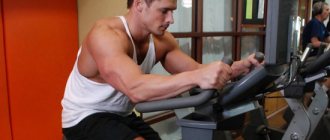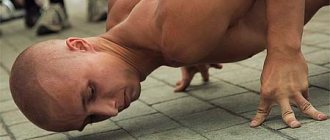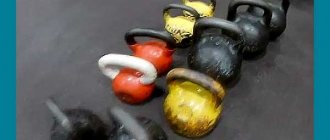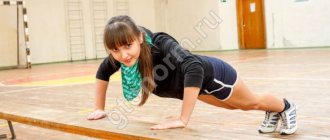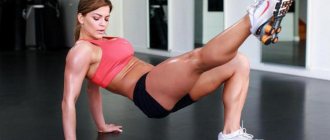The effectiveness of training a professional boxer.
Professional boxing is so called because sport is a profession that generates income, provides career growth, and meets the interests of society. These are good reasons to be successful. But a greater role in achieving success is played by a focus on results, which allows you to make exercises effective.
While effective boxing training is an important component, there is a parallel that connects the core elements of a champion training plan. These include:
- Mode. A clear routine starts at 5-6 am, includes 1-2 hours of morning jogging and 3-5 hours in the gym in the afternoon.
- Nutrition. Sports legends eat what they want, adding recommended supplements in the form of shakes and vitamins. And a few weeks before an important round, they change their diet.
- Leisure. Every professional receives psychological relief by doing a distracted favorite activity in the evenings.
- Mandatory exercises. There is a certain standard of exercises with slight deviations for each athlete.
- Additional procedures. This means things like massages and evening walks that are relaxing. Sleep was often mandatory after a morning run.
The modern training regime for professional boxing is complex, but many experts believe that in the past it was much more difficult, and the sport itself was more spectacular. In recent years, the rules of behavior in the ring have become stricter, numerous diets have appeared, athletes and coaches have become more cunning and involve more science and medicine in their work. These include psychology, acupuncture, chemistry for pain relief and stopping bleeding.
All this requires a change in the approach to training and their effectiveness becomes hostage to subjective preferences: watchability, humanity, profitability, even to the point of protests by anti-violence activists.
To study the training program for a boxer, let's pay attention to how Muhammad Ali, Roy Jones, Mike Tyson, Ken Norton were brought up. Yes, you should understand that no one will fully reveal all the secrets, but there is something to rely on.
Boxing club of Alexander Morozov
Questions about combining boxing and strength training in the gym arise quite often. We will try to give a competent professional answer to them.
For those who practice boxing “for themselves,” it is important to understand what is more important: building the body or mastering striking techniques. These are, in principle, essentially opposite loads. And not everyone can combine them. I have seen athletes in fitness halls who both swing and practice hitting a punching bag or bag. But these are, rather, “free artists”.
And here it should be noted that many professional fighters train with weights and lift in order to move up to a higher weight category.
The right approach
How to swing correctly for a boxer?
The general principle is to eliminate bending exercises. That is, do only extension exercises.
The fact is that bending exercises can lead to... boxer clamp. This is due to the fact that such exercises involve muscles that are not actually involved in striking. Like, for example, biceps. But a boxer operates primarily with the muscles of the shoulder girdle and triceps.
Therefore, extension exercises are necessary. These include, in particular, the bench press, dumbbell flyes... It is important to remember that all movements are directed away from you. If we talk about leg training, it’s not just squats, but dynamics, that is, jumping, bouncing, etc.
And here’s another question: is there any harm in principle in the combination of “rocking” and boxing?
No, there is no harm, but on one condition. Classes should be held in parallel and systematically. It is best to consult a competent specialist. And classes should be interspersed with relaxation exercises.
Let’s assume that a boxer goes to boxing training all the time, but then “pumps” with breaks, after which he starts strength training again, and at the same time puts significant stress on his muscles.
What do we see in the end? There is a complete imbalance in speed indicators. They either fall sharply, or, on the contrary, start sharply, but then again tend to zero. And here is the result: absolute instability in the speed qualities of the blow, for example, a drop in the quality of work on the paws. The blow becomes “sticky” and the so-called “push” is added to this. During sparring, the inhibition during counterattacks became very noticeable.
But those boxers who did strength training and boxing training at the same time show a diametrically opposite picture.
Weight matters
With parallel training in side and strength exercises, there is a rapid increase in all indicators in lightweight and middleweight boxers.
What is this connected with?
Boxers of light weight categories, as a rule, are mobile in the ring, they are characterized by high maneuverability and pace of fighting.
And strength training is added to this list. This is an absolute plus for such boxers, as it complements the above characteristics with increased endurance and energy.
But heavyweights and super heavyweights present a slightly different picture. They often do not have high mobility and speed in the ring. For the most part, their arsenal consists of body defense: dodges, dives and stands.
Taking into account the strength of the blows of such boxers, which is what the main emphasis is on (in combination with series), the basis of their technique is the speed of their hands, and not the speed of movement around the ring.
It is important to note here that the speed of the impact initially consists of the relaxation of the muscles of the whole body. The hardness of the blow is its final phase, followed by relaxation.
Therefore, improper strength training can lead to the fact that heavyweight boxers, who have a large volume of muscles, can become stiffer and also sharply lose speed. That is, the disadvantages significantly outweigh the advantages. And strength training often leads to great fatigue for a heavyweight boxer. And this in turn leads to a lack of timing; counterattack actions occur with significant inhibition; the reaction becomes slower. The fight becomes “meaningless” because the fighter loses precision - failures, lack of defense and maneuver - all this is a consequence of incorrect strength training - spontaneous, without a clear methodology.
Does this mean that such activities are generally contraindicated for heavyweight boxers? Not at all. But they must be dosed and, as already mentioned, based on a clear and individual methodology developed by an experienced specialist trainer.
The following thesis follows from this, as well as the answer to a frequently asked question: can a boxer in the gym do strength exercises according to the best practices given by fitness trainers, bodybuilding, etc.
The answer, as you probably already guessed, is sharply negative. No and no again!
Such experiments will lead, firstly, to muscle overload; secondly, these muscles are shock muscles, they will increase in volume, and this will only get in the way.
As a result, the boxer loses the speed of the blow, which becomes similar to a “push”.
The speed indicators of serial strikes are lost, since the strikes become “sticky”, while the exact opposite is needed, namely: explosive impulse and sharpness; maximum speed; extreme rigidity; maximum accuracy. All this taken together is also called “dry impact”.
This is also the so-called sharpness in impact. It represents the total coefficient of its speed and rigidity, which, in turn, is based on the competent delivery of the blow.
Neglecting the specifics of strength exercises for boxers leads to the above-described set of negativity.
Weight approach
A boxer increases muscle mass through strength training.
Weight increases. And the boxer may move to a higher weight category. All this is true.
Therefore, the boxer must take this factor into account. That is, by building muscle mass, you can change the weight category, which is actively practiced by foreign athletes.
For example, American professional boxers such as Evander Hollifield, Ray Jones and others used this method.
This method is justified and effective only when combined with proper sports nutrition.
Therefore, it is necessary to weigh everything and consult with specialists on these issues. Perhaps even listen to the opinions of several people. After all, the nutrition of a boxer and an athlete in general is sometimes the alpha and omega of his sporting achievements and, accordingly, his career.
Foreign boxers who practice strength training always strictly follow a special technique developed by personal trainers. That is, “what the doctor ordered.”
Any initiative based on the principle “I am my own doctor” and know my body better than anyone else is excluded.
It should also be noted that there are disagreements among boxing theorists and practitioners regarding strength exercises, that is, as often happens in the expert community, the issue is debatable. Some people welcome it when boxing is combined with “rocking”, while others are strongly against it.
Proponents of strength training admit that with the right combination of weight training and nutrition with boxing, you can acquire both muscles of steel and good striking technique.
Let's swing correctly at the Alexander Morozov Boxing School.
Telephone
Address
: St. Petersburg, metro station "Bukharestskaya", st. Salova, 52 / st. Sofiyskaya, 4, bldg. 3
Champion Muhammad Ali training
Training should be called the whole range of activities aimed at preparing the body and spirit of this professional, and not just physical activity.
Muhammad Ali spent 40 minutes jogging in the morning. During this time, he managed to run 10 kilometers, which is a good working result for an experienced athlete of 18-20 years old. The run ended with a series of simple exercises and stretching. At the end there was a shower and breakfast.
10 weeks before the fight, he ran 3-4 times a week for 5-10 kilometers, and 10 days before the start he stopped running completely. Ali did his jogging in heavy army boots.
Some Russian-language sites claim that he slept before breakfast, but there was nothing of the kind in his personal answers about his routine. The legend went to bed at 22:30 and woke up at 5:30. A complete list of Muhammad Ali's exercises is given in the table.
| Routine | Start time | Duration (min.) |
| Morning jog 10 km | 5:30 | 40 |
| Exercises and warm-up | 6:10 | ~ |
| Shower | ~ | ~ |
| Breakfast | ~ | ~ |
| Communication with the press, friends | ~ | ~ |
| Workout in the gym | 12:30 | 180 |
| Massage | ~ | ~ |
| Shower | ~ | ~ |
| Communication again | ~ | ~ |
| Dinner | ~ | ~ |
| Leisure | ~ | ~ |
| Dream | 22:30 | 7 o'clock |
Each training session was not very different from the previous one, but sometimes there was an adjustment to the opponent. He commented about his races: “I train while my opponent sleeps.” Mr. Ali's program consisted of the following elements:
- Warm-up - a basic exercise to avoid damaging the body and knees, included (15 minutes): Movement from foot to foot from side to side;
- Torso torsion;
- Light circular jumps on extended toes;
- emphasis on legs and speed;
- practicing combinations and endurance;
- Exercise bicycle lying on your back;
This is what M. Ali said: “I hated every minute of class, but I repeated to myself: “Don’t leave. Endure now and remain a champion for life.”
Leg muscle development
In boxing, legs are the foundation. They perform the following functions:
- Impact power.
- Dynamics and coordination of movements.
- Maneuverability.
- Development of overall endurance.
The power of the blow is directly related to the functioning and condition of the legs. The necessary impulse comes from them. He then follows up the body, unwinding, and is sent into the final stage of the arm.
Swift and maneuverable actions guarantee a more dangerous attack and a coherent defense. When a boxer is excellent on his feet, he becomes a difficult target to reach.
If a boxer's upper area is massive and his legs are weak, the faster they tire. And all the load goes to the spine. It is difficult for a boxer to make good attacks and defenses. He will run out of steam faster. The heart is under enormous stress. This is fraught with serious consequences.
How to pump up a boxer's legs? The following range of actions is proposed here:
- Football or basketball. The boxer relaxes psychologically, and his legs are trained. Their muscle skills improve and the athlete's coordination improves.
- Bicycle or exercise bike.
- Run.
- Squats.
- Jumping. The condition is a deep squat. It is important to vary the vector of jumps in the forward and backward directions. The jump is as impulsive as possible. It should be done as far forward as possible. There is no need to linger on the surface. You should work until you feel a powerful burning sensation.
- Little engine. Starting position – standing, legs together. Intensity is the highest. Small steps are taken along a modest abstract circle. Left leg is right, left leg is right. 10 circles are made in both motion and counterclockwise. The more intense and smaller the step, and the more harmonious the circle, the higher the efficiency of this work.
- Jumping rope. They should be: single, double, cross. The legs and pace must change.
- Elevation jumps. It could be, for example, a cabinet or a bench. The height is small. You need to alternately touch the surface of the elevation with your foot. Jumps are of high quality. Their number: 150-200.
- Shuttle. The front hand is connected, then the back hand. It is useful to work on a softer surface of the ring. When moving forward, jump back completely.
Mike Tyson training
Another example of discipline (this word is applied exclusively to training, and not to the person) is Mike Tyson's program. The whole day of this professional is continuous training, so it is beyond the power of an ordinary person, but he strives for something. The preparation consisted of 7 training days a week. By the way, Tyson’s striking force is 1150 kilograms - approximately the same as squeezing the jaw of a crocodile.
| Routine | Start time | Duration (min.) |
| Morning jog 5 km. | 5:00 | 60 |
| Shower | ~ 6:00 | ~ |
| Dream | ~ 6:00 | ~ |
| Breakfast omelette | 10:00 | ~ |
| Start of training in the ring | 12:00 | 120 |
| Steak and pasta dinner, juice | 14:00 | ~ 60 |
| Intensive work in the ring and on the exercise bike | 15:00 | ~ 120 |
| Physical exercise | 17:00 | ~ 60 |
| Dinner with steak, pasta and juice | 19:00 | ~ 60 |
| Exercise bike | 20:00 | 30 |
| Watching TV and sleeping | 20:30 | ~ |
A monotonous diet and a busy training plan may well be a legacy of prison life and a monotonous lifestyle when energy rushes out. The mode below confirms this quite accurately and is impressive.
- The training, starting at 12:00, included 10 rounds of sparring;
- The workout, starting at 17:00, consisted of (10 sets each): 2000 squats;
- From 500 to 800 push-ups;
- 500 push-ups;
- 200 pull-ups;
- 500 shoulder raises with 30 kilogram dumbbells;
- Neck exercises – 10 minutes
Mike Tyson trained his neck in a way similar to wrestling. He leaned on his head without arms and swayed from side to side and in a circle.
To practice the speed of the blow, the athlete hit a light bag with sand, and for strength, he hit a heavy one, which he deliberately swung. He interacted with the heavy bag, constantly moving around it and dodging when it swung towards him.
A peculiarity of the training is the almost complete absence of exercises with iron. Kevin Rooney, Mike's coach, believed that this way his ward would be more mobile and energetic and would be able to defeat any opponent.
Content
- 1 Features of a large-cycle training system (approximate training plan) 1.1 The first stage is general preparatory 1.1.1 The first week of the first stage
- 1.1.2 Second week of the first stage
- 1.1.3 Third week of the first stage
- 1.2.1 First week of the second stage
- 1.3.1 First week of the third stage
Ken Norton training
This black American, a boxing professional, had interesting nicknames that confirmed his achievements: Black Hercules, Jawbreaker, Fighting Footsoldier. The quality of his training reflected the approach of the times of Muhammad Ali, whom he faced repeatedly in the ring.
The boxer had 6 training days a week. Not much is known about the physical exercises themselves, nor about the routine.
Ken Norton is another athlete who starts his day with a morning run at 4:00-5:00, gradually transitioning into stretching, showering and rest.
His breakfast consisted of 9 boiled eggs, 7 pieces of bacon, 8 pieces of toast, a cup of cereal and a couple of glasses of juice or milk. That is, of everything that is advised to children for a healthy diet, only in several times larger quantities. His father taught him this: breakfast is the most important meal of the day.
| Routine | Start time | Duration (min.) |
| Stretching, basic exercises for the whole body | 4:00 | ~ |
| Jogging in the morning, 5-12 km | ~ 5:00 | ~ |
| Rest lying down | ~ 6:00 | 15 |
| Shower | 6:15 | ~ |
| Breakfast | ~ | ~ |
| Walk, 5 km | ~ | ~ |
| Dream | ~ | ~ |
| Classes in the hall | 13:00 | 150 |
| Rest | ~ | ~ |
| Dinner of two steaks, beans, lots of vegetables | 17:30 | ~ |
| Watching TV, recordings of your fights | ||
| Dream | 22:30 | 5.5 hours |
Particularly remarkable is the fact of eating twice a day, just like Muhammad Ali: breakfast, dinner. But, unlike his opponent, Ken Norton loved every exercise in the sport that he had to perform. The list of exercises for this boxer looks like this:
- Warm up – 20 minutes for the whole body;
- Shadowboxing – 3 rounds of 3 minutes, 30 seconds break;
- Sparring – 3 rounds of 9 minutes with 30 seconds of rest with three partners;
- Exercises with a pneumatic bag – 3 sets of 3 minutes;
- Heavy bag – 3 sets of 3 minutes;
- Raising a medicine ball (or other load) from the floor to the maximum height – 3 times for 3 minutes, rest 30 seconds.
Boxing, bodybuilding and non-professional athletes
The problem with non-professional athletes is that they inadequately assess their strength. If a person just wants a good shot, but at the same time wants to gain muscle mass, he needs to prioritize. In a bulking cycle, boxing training should be kept to a healthy minimum. For hardgainers, remove it altogether. When cutting, it is more important to follow a diet rather than do any special type of cardio exercise. Recovery is an important part of training for both boxers and bodybuilders. If it is not there, the athlete does not progress, the training plan is revised, and the additional load is removed.
A healthy person can combine strength training and boxing. But he does not need to wait for results at the elite level of sports in both disciplines.
Roy Jones Jr. Workout Plan
If the spectacle of boxing matches in the 21st century “sags,” it is exactly until the moment Roy Jones, the star of the heavy and light heavyweight division, enters the ring. Roy achieved his many achievements through determination and intensive training, which takes place 6 times a week.
Physical training takes the absolute world champion 6-7 hours, but this enabled him to achieve incredible speed in battle. He trains his endurance by playing basketball, running and cycling. Also classes start early in the morning. The champion runs from 8 to 12 kilometers, depending on his mood and well-being.
Information about training is not publicly available, but some elements of success become public knowledge, although there are many differences between official foreign publications and numerous Russian-language sites.
Foreign data:
- Roy's workout begins with a full stretch;
- Shadowboxing – 3 rounds;
- Heavy bag exercise – 6 rounds;
- Airbag – 3 rounds;
- Jump rope without stopping for 20-30 minutes;
- 50 squats;
- Stretching again;
- 20 chest shots with a medicine ball.
Russian-language information about the sports program:
- Warm-up;
- Shadowboxing – 4 rounds of 4 minutes. with a break of 30 seconds;
- Air blower – 16 min.;
- Lifting the pear from the floor to the top - 16 minutes;
- Exercises with a skipping rope – 25 min.;
- Work on pumping the abdominal muscles;
- Raising the body from a lying position – 100 times, 4 rounds;
- Leg raises – 100 times, 4 sets;
- Sparring.
Roy Jones' diet can confidently be called healthy, but not as rich as that of other fighters on the list.
- Breakfast – fruit;
- Lunch – chicken salad, vegetables, pasta;
- Dinner – protein ingredients such as chicken;
- Never took alcohol or chemical drugs;
Classification of physical qualities of a boxer
The physical qualities of a boxer are divided into several types:
- Power;
- Agility;
- Endurance;
- Speed (response);
- Maintaining balance.
An athlete's strength is the ability to overcome external resistance or influence the environment through muscle activation. Muscular strength is an important quality of a boxer, which determines the power of the blow and work in the clinch. Special importance is given to the so-called “explosive” force, i.e. the ability to exert maximum physical impact on an opponent in a short period of time.
Agility is the ability of a boxer to quickly and accurately carry out a list of actions depending on the situation. The basis for this quality is the mobility of motor skills. A deft boxer can wisely choose the time and place of striking, escaping pressure, and entering a clinch.
Endurance refers to the ability to perform required movements for a long time. This quality is indicated by activity from the beginning to the end of the fight. As the battle progresses, it steadily decreases, as physical capabilities gradually dry up. The key to success in a boxing match is to prolong the effectiveness of movements, for which endurance is trained.
Speed and reaction - the ability to instantly or in a short period of time carry out actions in accordance with the tasks being solved during the battle. The qualities presented are determined by simple actions practiced in training. With the development of speed and reaction, the boxer responds with pre-programmed movements, which are performed as a response to a specific activity of the opponent (strike, entry into a clinch, attempt to drive into the corner of the ring, etc.).
Maintaining balance is the ability to distribute body weight, i.e. move your center of gravity while remaining on your feet. Regardless of the distance of the fight or the impact on the opponent, it is important to be able to properly balance your own weight. This quality also allows you to avoid falling under enemy attacks.
Anyone can train this way!
There may be 1 in 10,000 people, not famous professionals, who can endure such a training program for a boxer. But they will be difficult if without motivation, and will lead to stress, including psychological stress. Sport is important in itself for the mind and physical development of any person, and not for achieving unrealistic goals. Although it is precisely unattainability that makes people champions.
As was mentioned at the beginning of the article, if an ordinary person does 10% of what is specified, then he can maintain a healthy shape, prolong youth, and maintain strength. In addition, it is not possible to train on a larger scale due to external pressures: work, children, family. But some rules can be identified:
- Start your morning vigorously with physical exercise.
- Eat healthy food, but what you like.
- Practice boxing using elements from other disciplines.
- While you are young, choose: make boxing your profession or your sporting hobby.
Strengthening exercises for fists and joints
There are two polar opinions in the world of boxing. Some believe that when practicing punches on a punching bag, the hands and fists become stronger on the outside. Some experts are of the opinion (and scientifically substantiate their point of view) that a boxer should strengthen these parts of the body “from the inside.” The following set of exercises is suitable for this:
- We take a lying position, lean on our fists, and place them so that the main impact falls on the impact zone of the fist, we pump up our knuckles and hands as if “rolling” on our fists;
- While lying down, we perform push-ups on the fingers: initially we use five fingers, as the hands and knuckles become stronger - three;
- We take the bar from the barbell with a narrow grip, sit on the bench, place our hands so that our palms with the bar are suspended, and perform translational movements of the bar up and down, using only our wrists.
Thus, physical training for a boxer is a set of exercises for developing the required qualities. It should be aimed at developing and improving those characteristics that are less “pumped” in the athlete. Eliminating weaknesses along with achieving “strong” characteristics is the key to success in battle.
